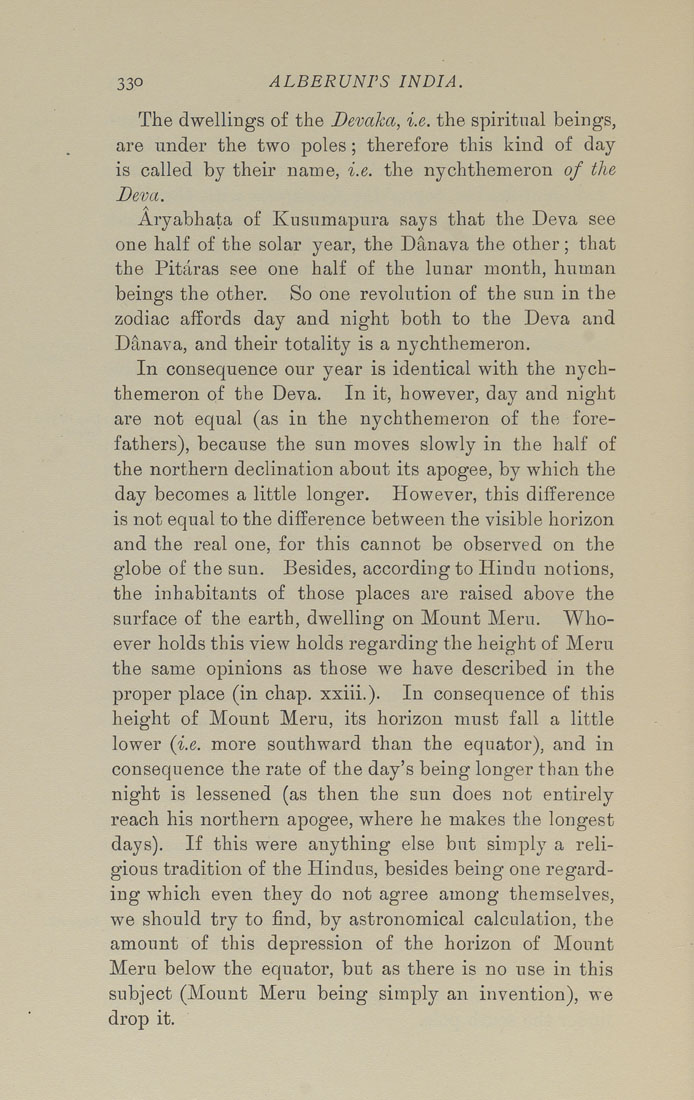Bīrūnī, Muḥammad ibn Aḥmad, Alberuni's India (v. 1)
(London : Kegan Paul, Trench, Trübner & Co., 1910.)
|
||
|
|
|
|
| Page 330 |

330 ALBERUNPS INDIA. The dwellings of the Devaka, i.e. the spiritual beings, are under the two poles; therefore this kind of day is called by their name, i.e. the nychthemeron of the Deva. Aryabhata of Kusumapura says that the Deva see one half of the solar year, the Danava the other; that the Pitaras see one half of the lunar month, human beings the other. So one revolution of the sun in the zodiac affords day and night both to the Deva and Danava, and their totality is a nychthemeron. In consequence our year is identical with the nych¬ themeron of the Deva. In it, however, day and night are not equal (as in the nychthemeron of the fore¬ fathers), because the sun moves slowly in the half of the northern declination about its apogee, by which the day becomes a little longer. However, this difference is not equal to the difference between the visible horizon and the real one, for this cannot be observed on the globe of the sun. Besides, according to Hindu notions, the inhabitants of those places are raised above the surface of the earth, dwelling on Mount Meru. Who¬ ever holds this view holds regarding the height of Meru the same opinions as those we have described in the proper place (in chap, xxiii.). In consequence of this height of Mount Meru, its horizon must fall a little lower (i.e. more southward than the equator), and in consequence the rate of the day's being longer than the night is lessened (as then the sun does not entirely reach his northern apogee, where he makes the longest days). If this were anything else but simply a reli¬ gious tradition of the Hindus, besides being one regard¬ ing which even they do not agree among themselves, we should try to find, by astronomical calculation, the amount of this depression of the horizon of Mount Meru below the equator, but as there is no use in this subject (Mount Meru being simply an invention), we drop it. |
| Page 330 |







